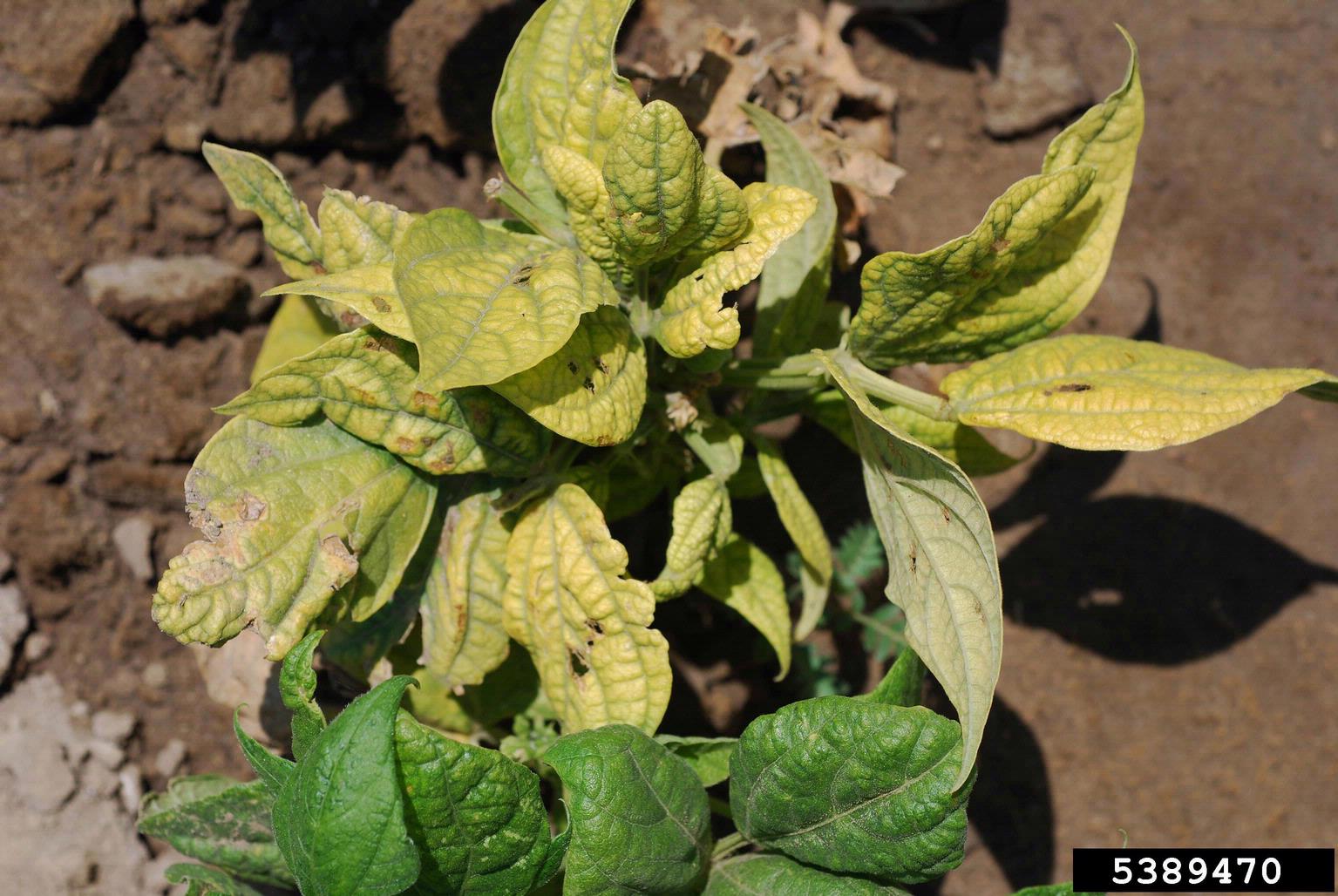Curly Top Virus Control: What Is Curly Top Virus Of Bean Plants

If your beans are looking peaked but you’ve been vigilant about watering and fertilizing, they may be infected with a disease, possibly curly top virus. What is curly top virus? Read on for information about beans with curly top disease and treating curly virus in beans.
What is Curly Top Virus?
As the name suggests, curly top virus of bean plants mimics the symptoms of moisture stress, a plant with curling leaves. In addition to curling leaves, beans with curly top disease have foliage that becomes thickened and stiff with leaves that twist and curl upward. The leaves may stay green or turn yellow, the plant becomes stunted, and the beans may be deformed or simply not develop. Curly top virus (CTV) doesn’t just afflict bean plants but tomatoes, peppers, sugar beets, melons, and other crops. This virus has a huge host range and causes disease in over 300 species in 44 plant families. Some plants may become infected while others in close proximity show no symptoms and are virus free. Curly top virus of bean plants is caused by beet leafhoppers (Circulifer tenellus). These insects are small, about 1/10 of an inch (2.5 mm.) in length, wedge shaped, and winged. They infect perennial and annual weeds like Russian thistle and mustard, which then overwinters amongst the weeds. Since a severe infection can decimate a bean harvest, it is important to learn about curly top virus control.
Curly Top Virus Control
There are no chemical controls available for treating curly top virus in beans but there are some cultural practices that can reduce or eliminate infection. Planting virus resistant crops is the first step to preventing CTV. Also, leafhoppers prefer to feed in sunny areas, so providing some shade by draping shade cloth over some stakes will discourage them from feeding. Remove any plants that show early signs of curly top virus. Dispose of infected plants in a sealed garbage bag and deposit it in the trash. Keep the garden clear of weeds and plant detritus that offer shelter to pests and disease. If you are in doubt about whether a plant has contracted the virus, a quick check is to see if it needs water. Soak the soil around the ailing plant in the early evening then check it in the morning. If it has perked up overnight, it’s likely it was just moisture stress, but if not, the plant more than likely has curly top and should be disposed of.
Gardening tips, videos, info and more delivered right to your inbox!
Sign up for the Gardening Know How newsletter today and receive a free copy of our e-book "How to Grow Delicious Tomatoes".

Amy Grant has been gardening for 30 years and writing for 15. A professional chef and caterer, Amy's area of expertise is culinary gardening.
-
 Zinnias On Repeat: 10 Glorious Cut-And-Come-Again Varieties For Endless Summer Bouquets
Zinnias On Repeat: 10 Glorious Cut-And-Come-Again Varieties For Endless Summer BouquetsThese zinnia varieties keep giving all summer, making them the perfect choice for dedicated cutting gardens – or just the occasional homegrown bouquet.
By Ellen Wells
-
 Create A Romantic Garden Straight Out Of Bridgerton: Regency Era Romance In Your Garden
Create A Romantic Garden Straight Out Of Bridgerton: Regency Era Romance In Your GardenTry some romantic garden ideas straight out of Bridgerton. Flowers and gardens in the Regency era were lush and charming and you can get the same look!
By Bonnie L. Grant